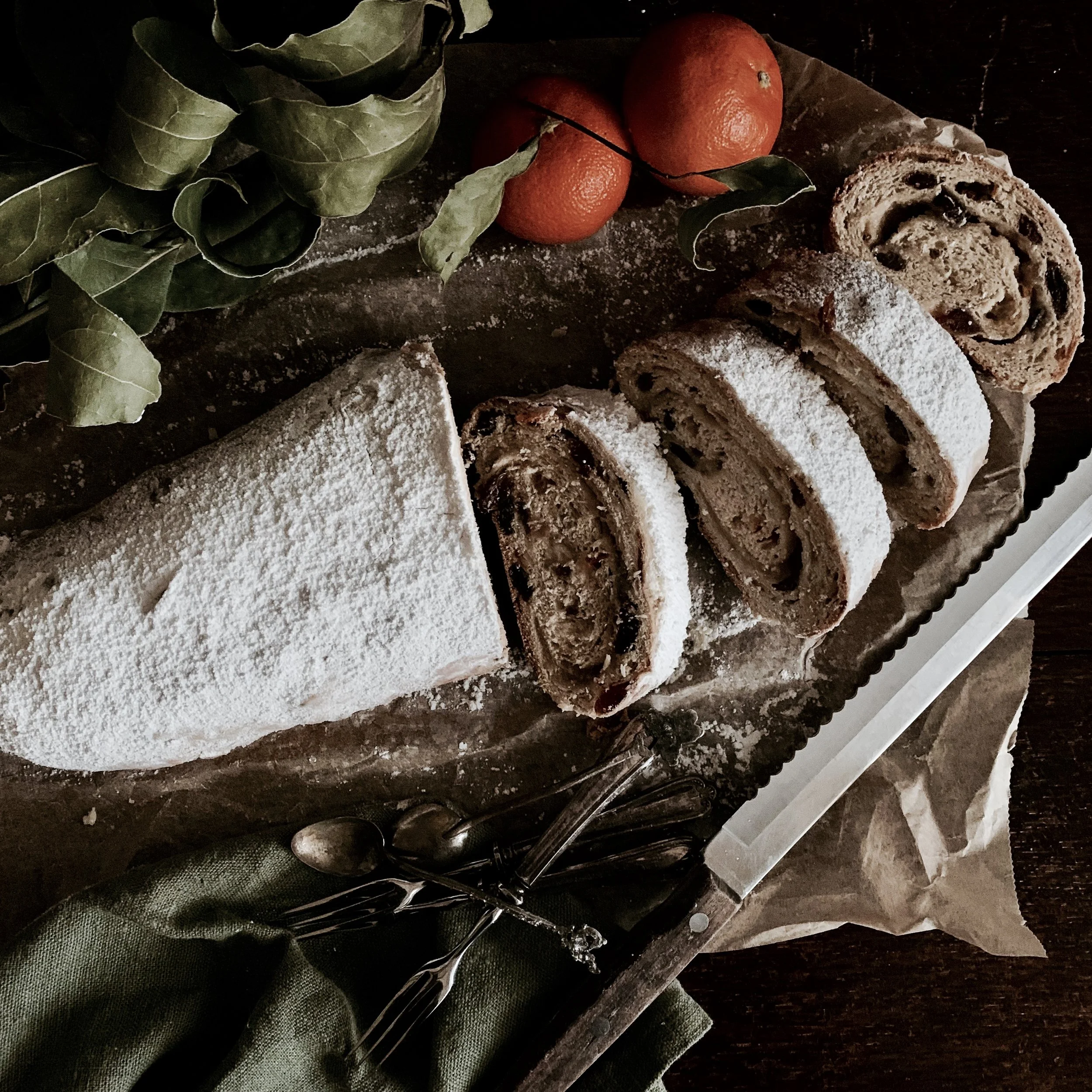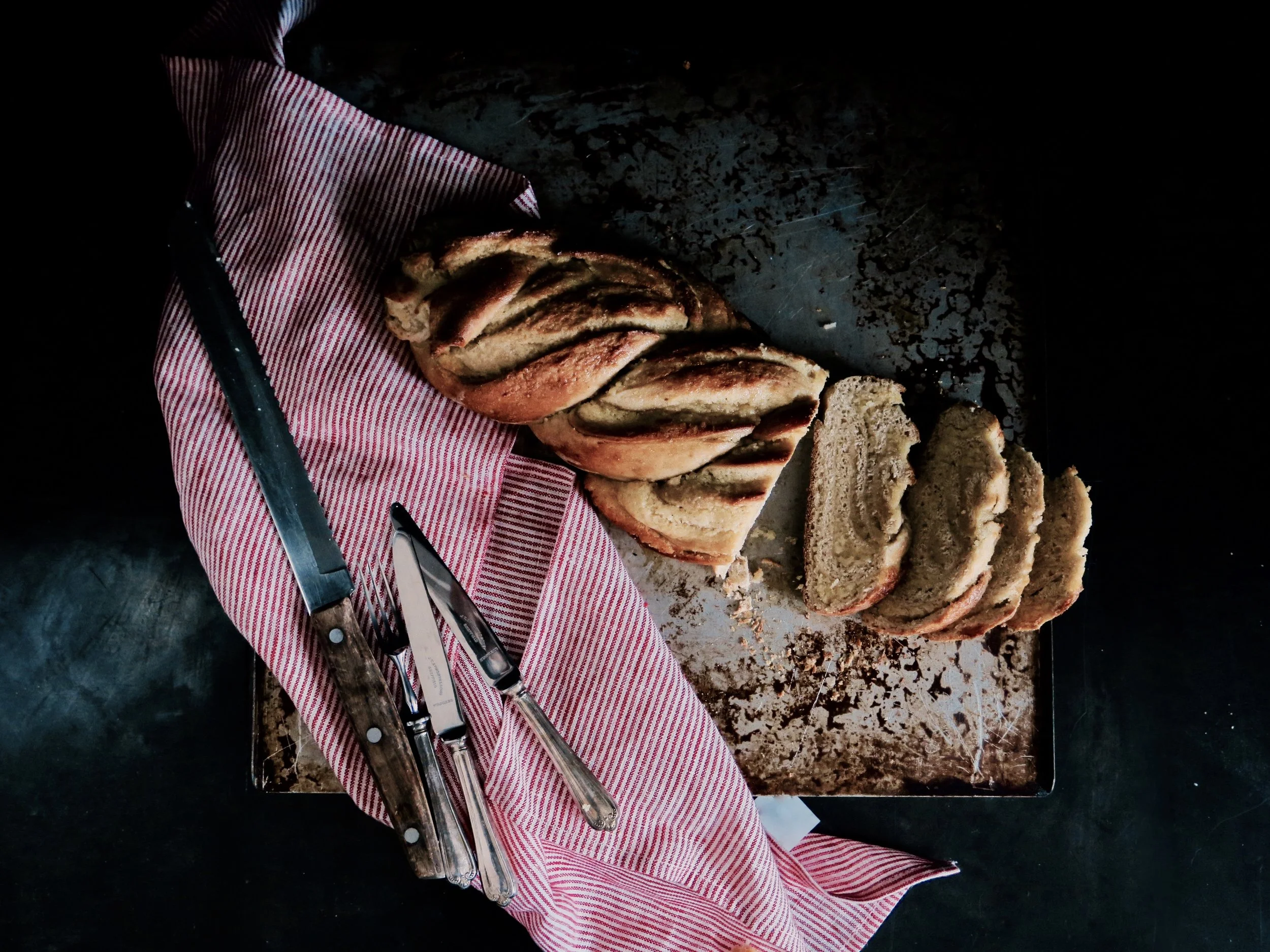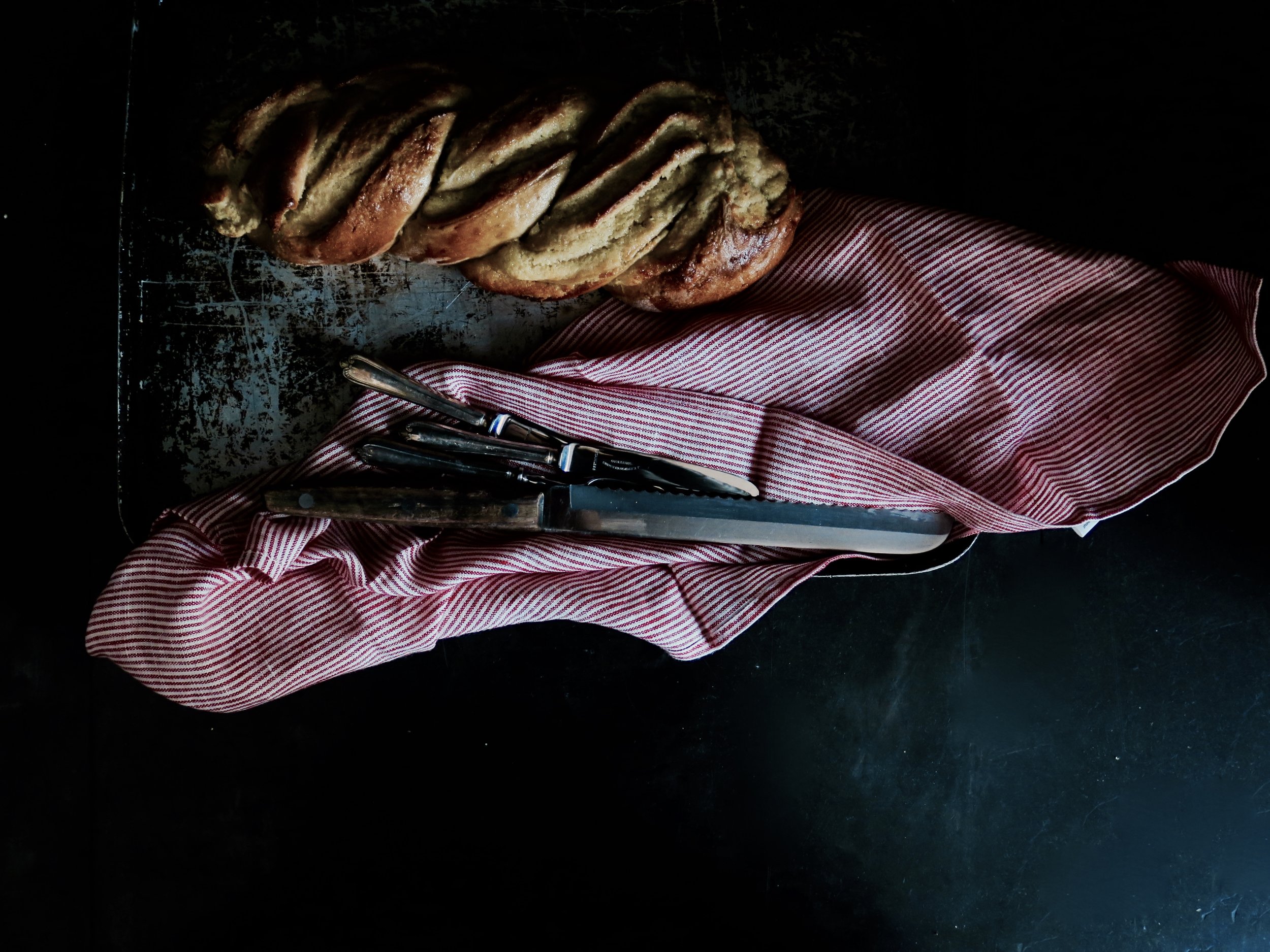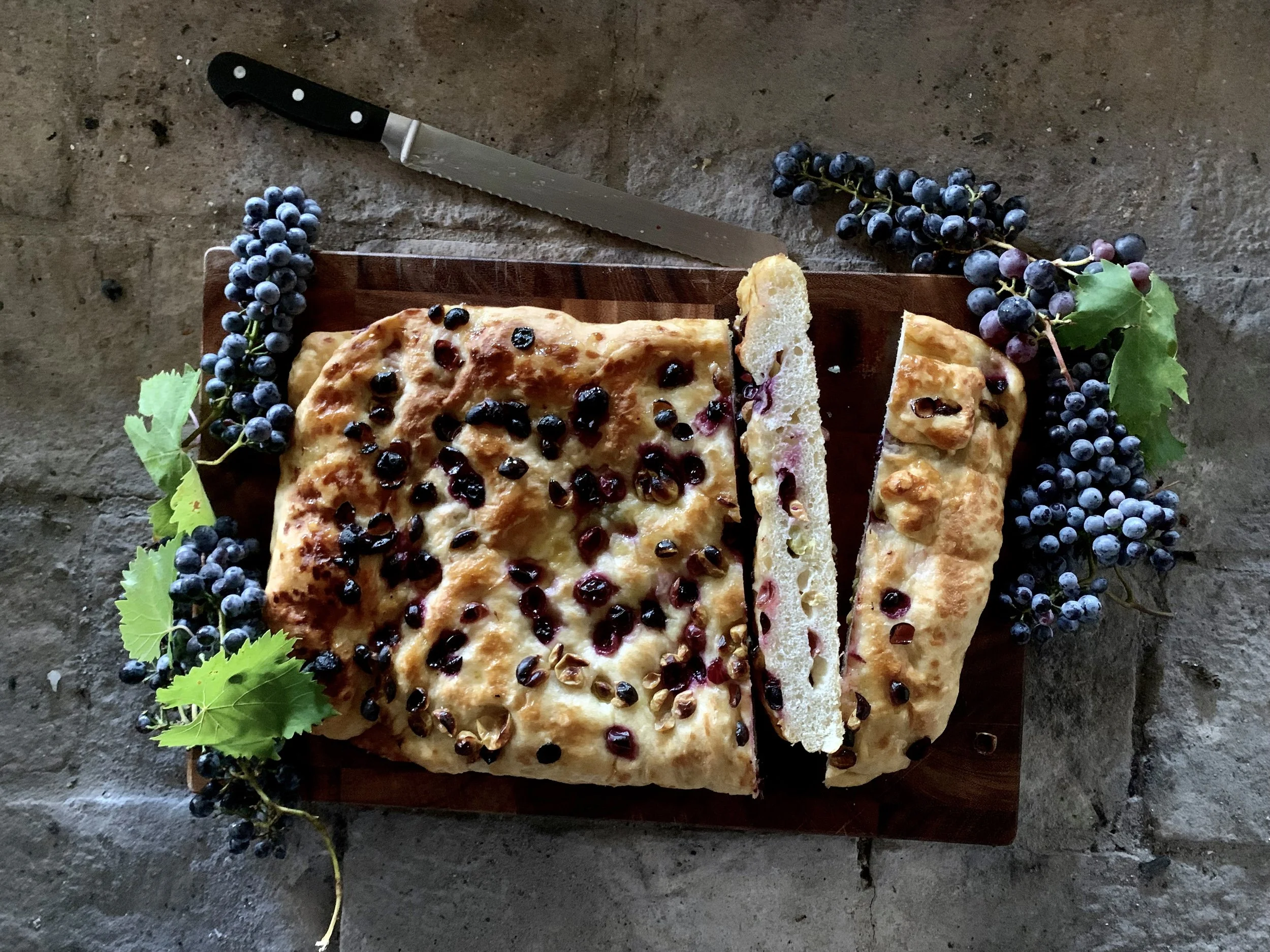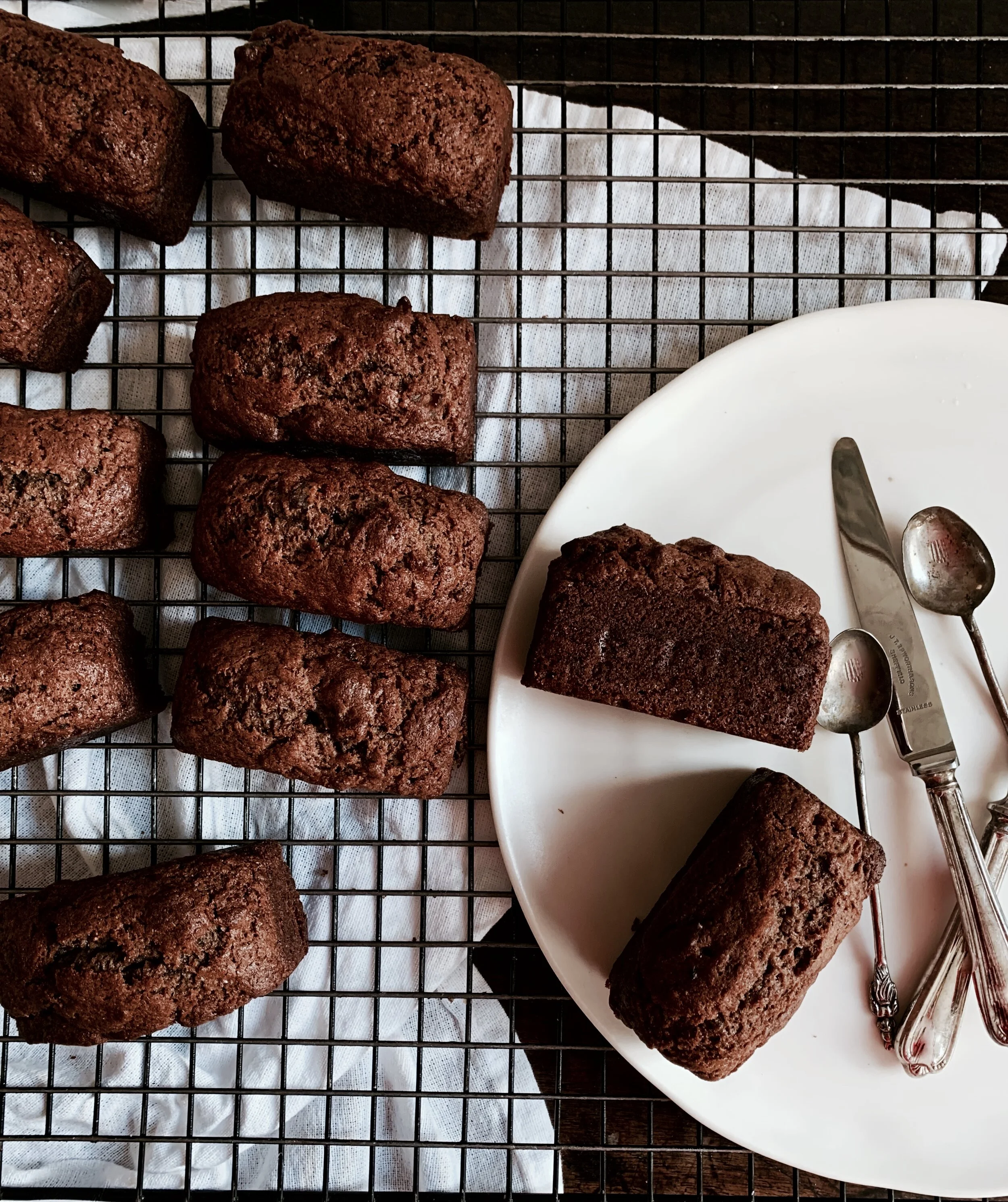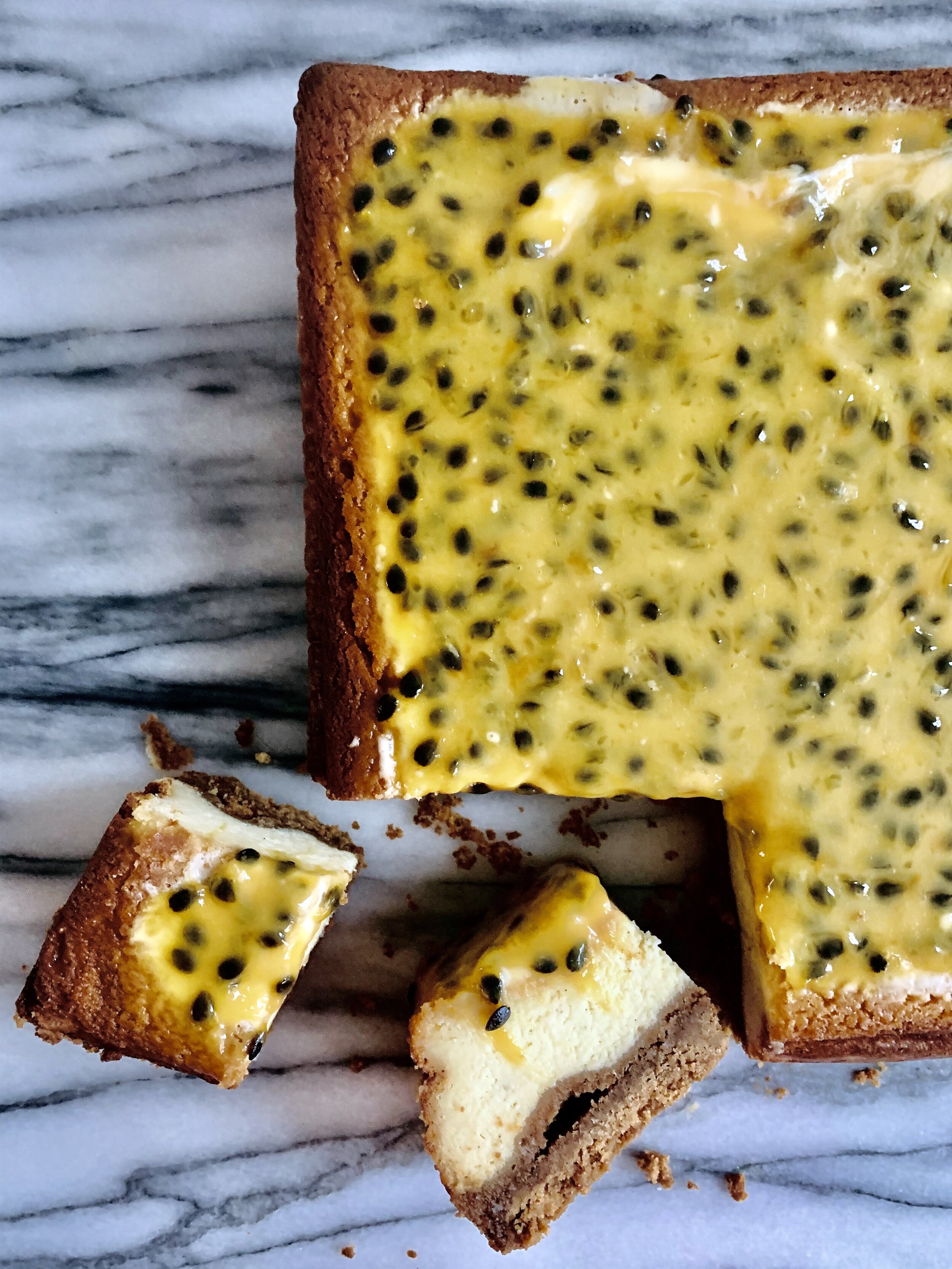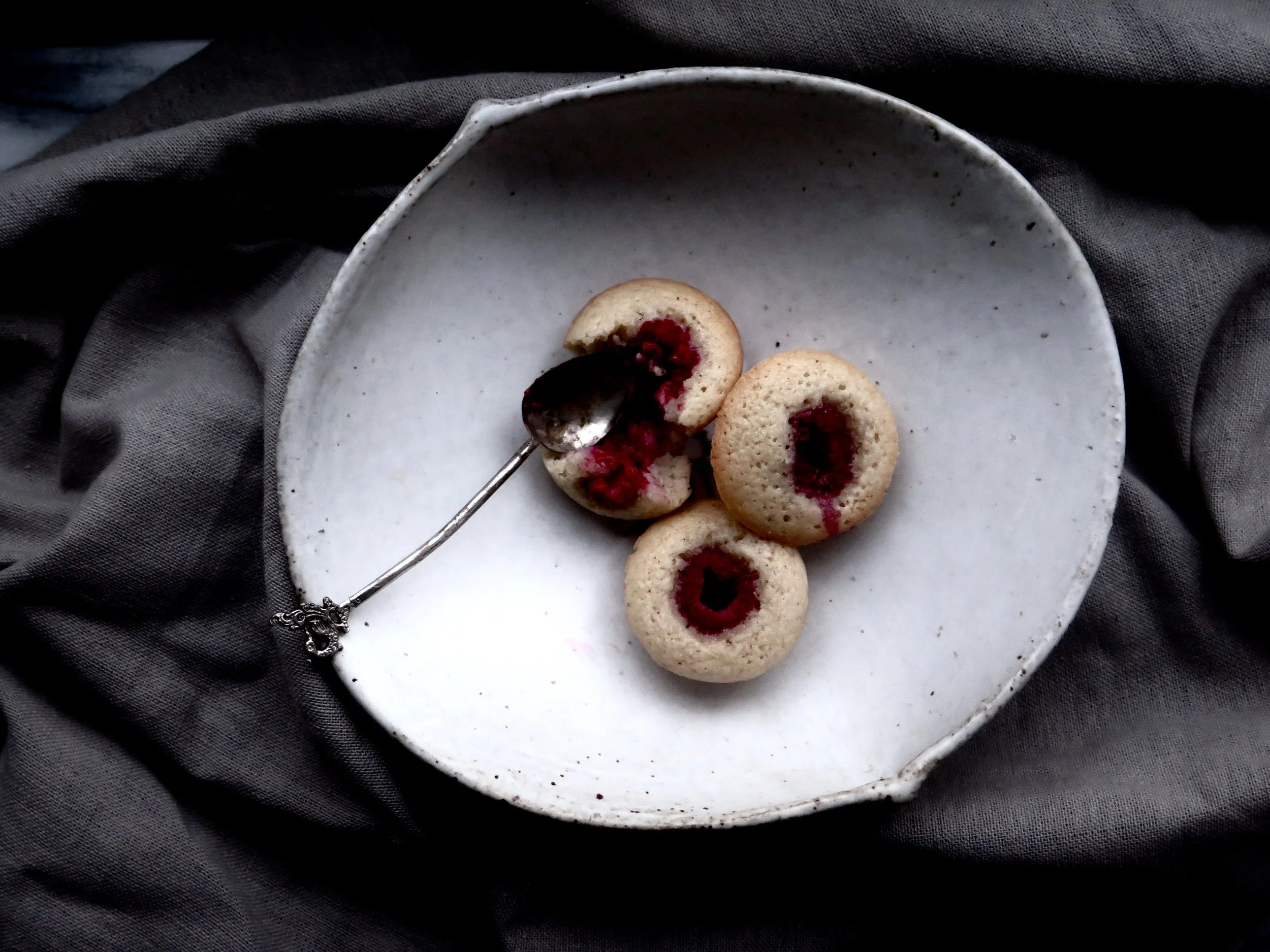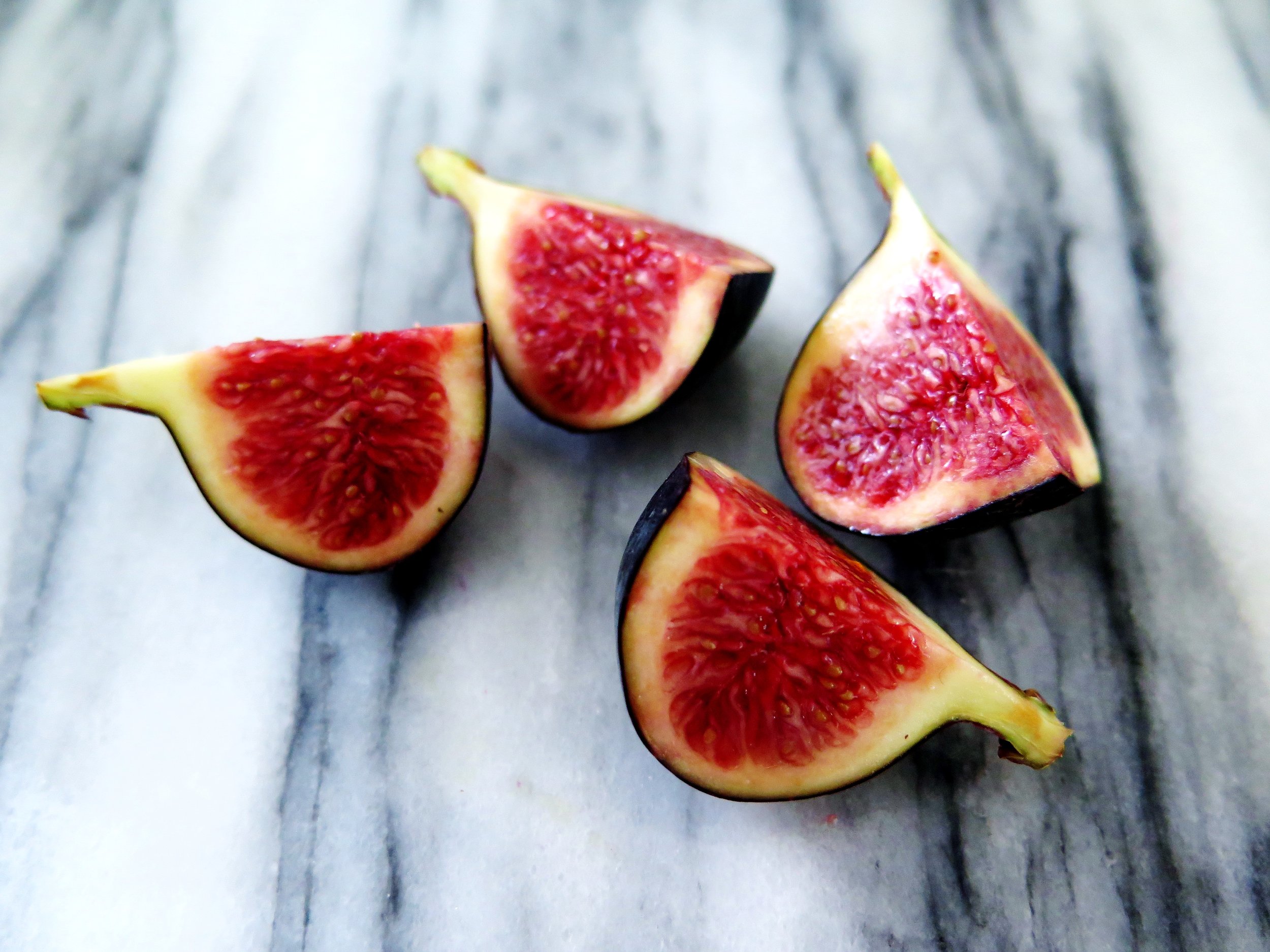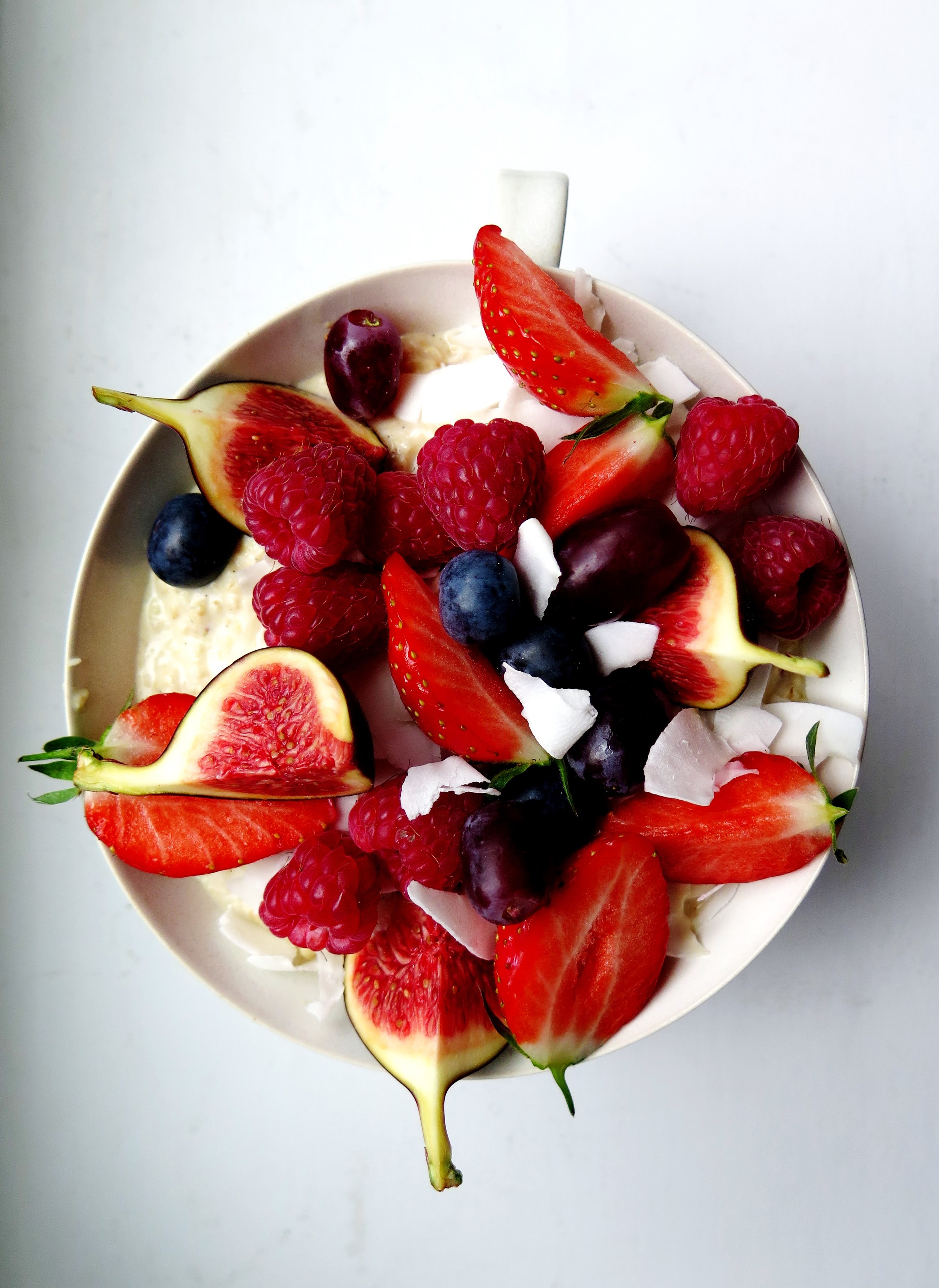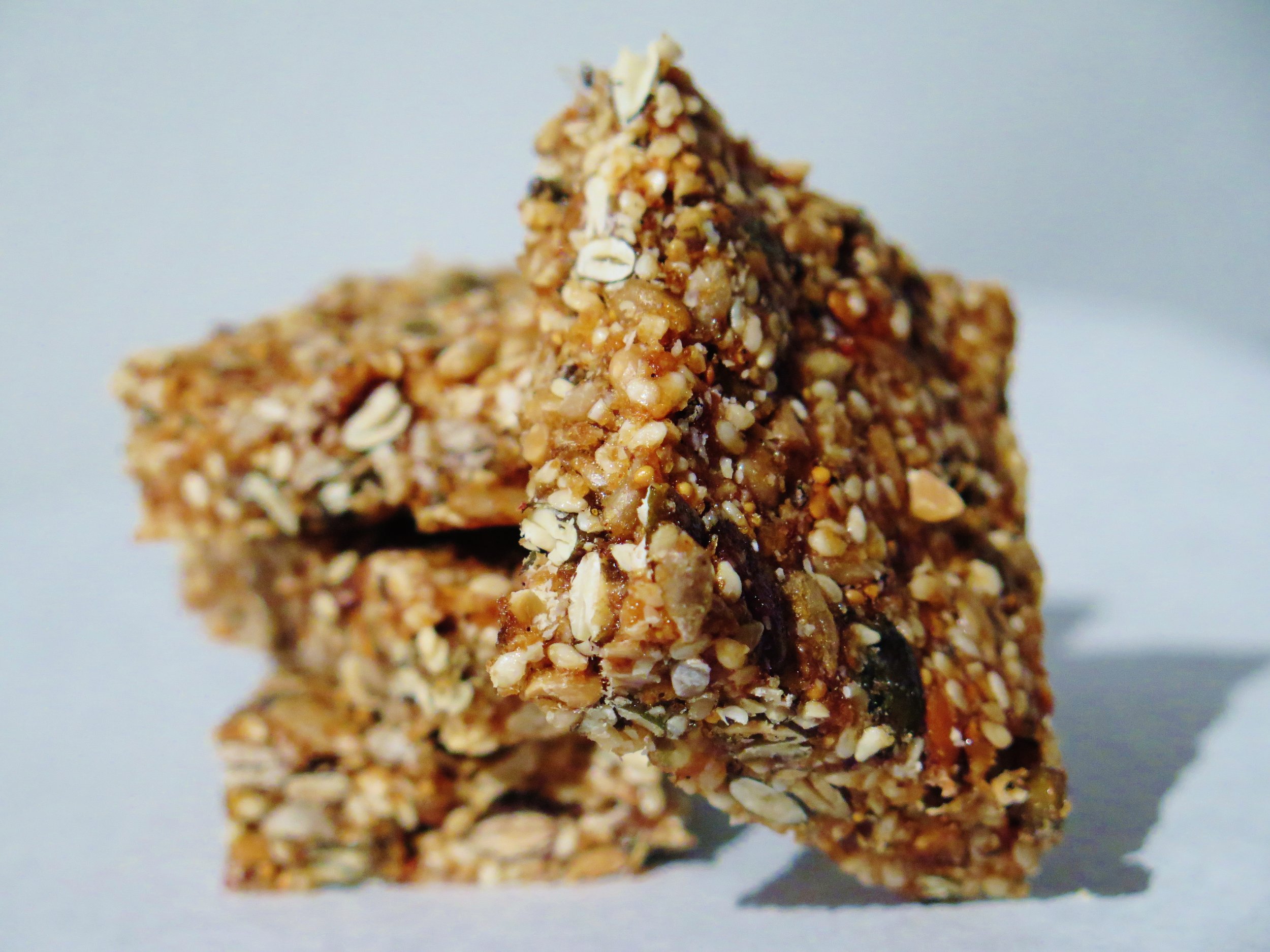This recipe is delivered with a warning: this stollen, despite its understated, simple, appearance, is highly addictive. I ate almost an entire stollen in one day and felt quite sorry for myself afterwards (guilt streaked sugar-overload), so arm yourself with friends or a freezer before making it
Viewing entries tagged
almonds
This bread is the love child of a brioche and stollen. The dough is soft, buttery and ridiculously moreish. And the filling is like that marzipan core of stollen except less overpoweringly almondy, lighter and less tooth-achingly sweet (which means you can have more of it, of course). One of my many intolerances is not gluten, nuts or dairy but overpromising. If the title promises a filling, I want that filling, and I want it in abundance. If it says caramel, I want luscious rivers of it; if it’s olives on a pizza, I want at least one for every 2cm squared (NB I am disappointed by this every time - unless I make it myself). And, if it is a frangipane bread, I demand every mouthful to be molten with frangipane.
So, in response, this bread will not fail to meet expectations: not only a show stopper in appearance, it is also ambrosial. I had to make this several times in order to photograph it before it was inhaled by surrounding friends/family.
If you want to have plain bread, just leave out the frangipane and follow the instructions below. Similarly, if you’re feeling experimental add another filling in place of the frangipanes - think Nutella, marmalade, fruit conserve…
Ingredients (makes 2 loaves)
For the bread
30g fresh yeast (or 15g dry yeast)
100g caster sugar
250ml lukewarm milk (normal or any non-dairy alternative)
2 large eggs, beaten
1 tsp salt
700g white spelt flour (or plain wheat) + more for kneading
100g unsalted butter, at room temperature
For the frangipane
180g caster sugar
150g unsalted butter, at room temperature
4 eggs
½ tsp salt
250g ground almonds
1 ½ tsp almond extract
2 large baking sheets lined with baking parchment
Method
1) In the bowl of an electric mixer (or large mixing bowl), cream together fresh yeast and caster sugar until the sugar begins to dissolve and turns the yeast liquid. If using dry yeast, add it into the milk first and allow to sit for five minutes before continuing with step 2.
2) Pour in lukewarm milk, 3/4 of the beaten eggs (i.e. 1 ½ eggs, keeping the other half aside to paint the bread) and salt, and whisk together. Whisk in 100g grams of the flour to begin to incorporate air.
3) Add the remaining flour into the mixture and mix together. Once combined, either using a mixer fitted with the dough hook, or on a heavily floured surface knead the dough for about 5 minutes until it is smooth and bounces back when pressed with your thumb. Temperature and humidity can affect the dough texture so you may need to add a touch more flour if it is truly unworkable, though try to keep it to a minimum as too much will make the bread tough and the dough difficult to roll out. I find that using the dough hook initially until combined and then kneading by hand for the last stretch particularly effective.
4) Place in a large oiled bowl in a warm spot and cover with a cloth or clingfilm to allow to rise until doubled in size (about 45 minutes to an hour).
5) At this point, if you wish to make the bread without the frangipane, proceed to step 7a
6) To make the frangipane, beat together the sugar and butter until light and fluffy. You can do this by hand or in a mixer fitted with the paddle attachment. Beat in the eggs (don’t worry if it looks slightly curdled at this point), then stir in salt, ground almonds and almond extract. It should be a smooth almondy paste.
7) Once the dough has risen, punch back down, turn it onto a heavily floured surface
a. For bread without filling: divide dough into two (to make two loaves). Shape as desired, but if you favour a plaited loaf, as I do, taking one of the dough halves, divide it into three or four pieces (depending on whether you prefer a three- way or four-way plait.) Roll each piece into a long, even strand of about 3cm in diameter. Then pinch the ends together and plait as normal. When you reach the end of the plait, pinch the strands together and tuck under. Repeat for the second loaf, place on a baking tray and cover. Leave to rise for about half an hour.
b. For bread laced with frangipane: place the dough on a large, flat, heavily floured surface and roll it to a rectangle of about 60 x 30cm and about ¾ cm thick. Tip the frangipane mixture into the centre of the dough, and spread it out evenly with a spatula right up to the edges. Then, from the long side, roll the dough to make a long tight coil. Finish with the seal at the base of the roll. Then slice the roll into two (in order to make two loaves). Take one long roll and holding the knife directly above the roll, with the blade parallel to the length of the roll, bisect it running the knife through the centre along the its length. Once split, with the open halves separate, pinch them at the top and then cross one over the other repeatedly in a kind of two string plait. Pinch at the end and tuck it under then place on baking tray. Repeat with the other half.
8) Cover both breads with a cloth, and allow to rise in a warm place for 45 minutes. Preheat the oven to 200 °C.
9) With the remaining beaten egg, brush the tops of the breads. Place the breads in the oven to bake for 10 minutes. Then reduce the oven temperature to 180 °C and allow to bake for a further 10-15 minutes. Ovens can be temperamental, so check every 5-10 minutes to ensure that the bread doesn’t burn. If it looks like it is beginning to catch, cover with aluminium foil and continue to bake. Remove from the oven when the outside is a deep golden colour. Place on a cooling rack and allow to reach room temperature, then devour. Best eaten on day of baking, but the bread can be frozen in a sealed air tight container for up to 3 months.
HUNGRY FOR MORE?
Entremets, soufflés, macarons, choux buns - even making ciabatta, a two day process, which culminates in a dough whose tenacious elasticity has been known to reduce some people to tears - I’ve generally met their challenges.
However, hubris met nemesis a couple of weeks ago. I came home to the nutty toasted perfume of a new recipe my mom had tried out: ridiculously simple, five ingredient coconut wafers so thin you could see the sunset through them, so tender that they crumbled in anticipation of hitting one’s tongue, and so light and moreish that a second batch was immediately required in order to satisfy my family’s greed.
I duly crumbed, clumped, chilled, and sliced. “Make them thinner,” my mom said. And I did, each slice crumbling into thousands of buttery coconut crumbs. I pressed them together and started again. And again. Unfortunately, it was only my patience that turned out thin, and the petulant three year old in me ended up scooping together the entire mixture and, from a height, throwing it down onto the tray.
Finally, I managed to get the fragments to coagulate by adding water. Things went more smoothly, but the biscuits, when baked, were slightly tougher, less flaky and less moreish than the original batch. Nevertheless, my brother took them to university. One of his friends, suffering from tonsillitis, reached into the box of biscuits, and in taking out one, touched many. The rest were binned, mostly due to the possibility of their having being infected with tonsillitis, but clearly not delicious enough to warrant risking it – a failure in my book.
After nursing my crumbled confidence for several days I swerved off the rocky path of coconut wafers to try my hand at financiers. I have always admired them - perfectly bite sized and innocent- looking with the flush of raspberry in the centre. They are also simple to make, requiring few ingredients, and turning out both delicious and delicate.
The history is much debated, but some say they were create by nuns of the Order of the Visitation and then adapted by a French baker, Lasne, to sell in the Parisian financial district where their almond content allowed them to keep well in the pockets of bankers.
They are elegant and dainty, slightly crunchy on the outside, the tender blond crumb perfumed with a slight orange tang and moistened by the burst of raspberry. They do keep rather well and would bless a summer’s picnic.
Recipe:
Makes 30 (approx)
50g unsalted butter
50g plain flour
160g icing sugar
140g ground almonds
1/2 tsp salt
200g egg whites (6 large eggs)
1/4 tsp almond extract
zest of 1/4 orange
60g raspberries (minimum of 30 raspberries i.e. 1 per financier)
Very well-greased and flour- dusted 3 x 12 hole mini cupcake tins (with 2.5cm diameter circles) OR 1 to be used 3 times
Method:
- Melt the butter in a small pan over a medium heat. When completely melted, stir the bottom of the pan continuously until the butter turns a deep gold colour and nutty in aroma. Set aside to cool.
- Sieve the flour and icing sugar into large bowl. Stir in the ground almonds and salt. Once combined, pour in the egg whites, almond extract, zest and slightly cooled butter and stir to fully combine. Cover the bowl and allow the mixture to chill in the fridge for 2 hours.
- Preheat the oven to 180C.
- Spoon the batter into the holes until each is two thirds full. Press a raspberry into the centre of each - the batter should rise to all the way to the top.
- Place in the oven to bake for 10-12 minutes or until light gold in colour. Transfer to a wire rack to cool (to avoid them becoming soggy) or devour immediately.
'Oats: a grain, which in England is generally given to horses, but in Scotland supports the people’ Samuel Johnson, The Dictionary of the English Language, 1755
If I were the type of person that leafed (ironically) through Cosmo, and stumbled across one of those lazy, page-filling content, tree diagrams which happened to ask “what is your spirit animal?”, I know what mine would be. A horse. Well, at least that’s what it would have been during the second year of my time at university in terms of comestibles…
Essay crises necessitate fuel in order to feed the adrenaline and, for me, that fuel came in the form of oats.
When you have a 9 am deadline approaching, and there is only one hour remaining, every minute is precious - so there is no time to spare for cooking oats over the hob until they break down into a creamy mulch.
That’s the excuse I gave myself. Instead, I developed the rather grotesque habit of eating oats straight from the packet, raw and desiccated. In my maddened and pressured state, I savoured the clagginess of the oats, where you can’t quite conjure up enough saliva to swallow them. Ideal.
I have since moved on from this stage (with the very occasional relapse) to a more acceptable way of dealing with my love of oats: Bircher muesli, invented by Bircher Benner, a pioneer of raw foodism, in the late 19th century as a way of curing his jaundice. It worked.
I feel, somewhat justifiably, that it runs in my blood (thick & creamy): my great-great-uncle was a frequent patient at Benner’s rather avant garde Swiss raw food clinic and, one sunny day, he stepped down from a plane on an impromptu visit from Scotland to South Africa with no clothes besides the ones on his back, a vegetable juicing contraption which he trailed behind him on a rickety little cart, and a proselytising passion for Bircher muesli.
I have tried many a Bircher muesli, from Swiss versions to Vietnamese attempts, but I feel I have concocted the ultimate version (excuse my arrogance). Creamy, healthy, juicy, and exotic, it’s effectively manna, and I would happily have it for every meal of the day (jaundiced or not).
The Best Bircher Muesli (Serves 5)
Ingredients
2 Braeburn apples, grated
Juice of 1/2 lemon
200ml orange juice
200g natural yogurt
200g almond and coconut milk (can be substituted with dairy or non-dairy alternatives)
3 tbsp maple syrup
1 tsp vanilla bean paste (if you can’t get hold of this, omit it, or substitute with ½ tsp vanilla extract)
50g desiccated coconut, lightly toasted in a pan on a low heat until pale gold)
200g porridge oats
Pinch of salt
200g of fresh fruit of your choice (blueberries, strawberries, raspberries, figs, sliced banana work well)
40g coconut chips (optional but adds great texture)
Method
- In a large bowl mix together all the ingredients apart from the fresh fruit and optional coconut chips. If you are making this the night before, cover the bowl with cling film and place in the fridge overnight to let the oats soak up the flavours. If you are serving the muesli immediately, stir the mixture for a couple of minutes to break down the oats until they are creamy.
- If you are leaving the muesli overnight, allow it to come to room temperature before serving. Scatter mixed berries and fruits and coconut chips over the top and serve.
 When you get the 4 o’clock slump, moderation is at an all-time low and chocolate bars are winking at you, reach for one of these carb-free, sugar-free, gluten-free fruit & seed bars instead. They are high in protein, vitamin rich, low GI, ridiculously easy to make (no baking), yet despite their virtuousness, they are irresistibly delicious.
When you get the 4 o’clock slump, moderation is at an all-time low and chocolate bars are winking at you, reach for one of these carb-free, sugar-free, gluten-free fruit & seed bars instead. They are high in protein, vitamin rich, low GI, ridiculously easy to make (no baking), yet despite their virtuousness, they are irresistibly delicious.
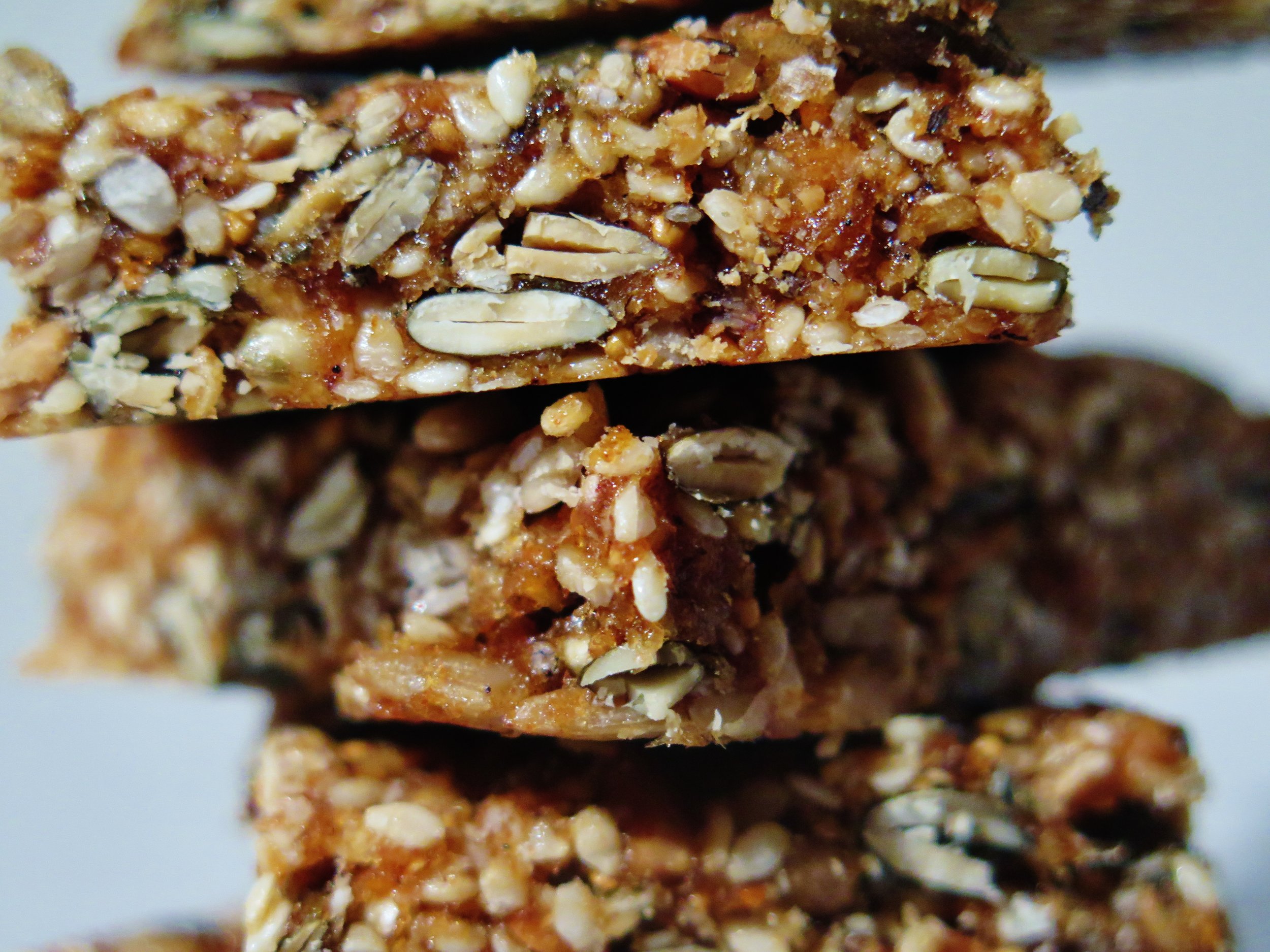
Ingredients
500g mixed seeds (I use pumpkin, sunflower, sesame)
40g ground almonds (optional)
3 tbsp chia seeds (optional)
3 tsp vanilla bean paste (use vanilla extract if not available)
200g medjool dates
200g dried figs
Pinch of salt
20x25cm baking tray, greased
Makes about 30, depending on size
Method
- Pre-heat the oven to 180˚C.
- Spread out the mixed seeds on a large baking tray (not the pre-greased one) and place in centre of oven to toast for 5 minutes until they are beginning to turn golden. To achieve the same result without an oven, toast them in frying pan over a medium heat and stir continuously for about 5 minutes.
- Blend together figs, dates, vanilla bean paste and salt until they turn to a smooth paste.
- In a large bowl mix together toasted mixed seeds, ground almonds, chia seeds and the fig-date paste until thoroughly combined.
- Press the mixture into the pre-greased baking tray and slice into bars of desired size.
- Wrap the tray with clingfilm and place in freezer for at least an hour, or leave overnight in fridge to set. The bars will last for several weeks.

